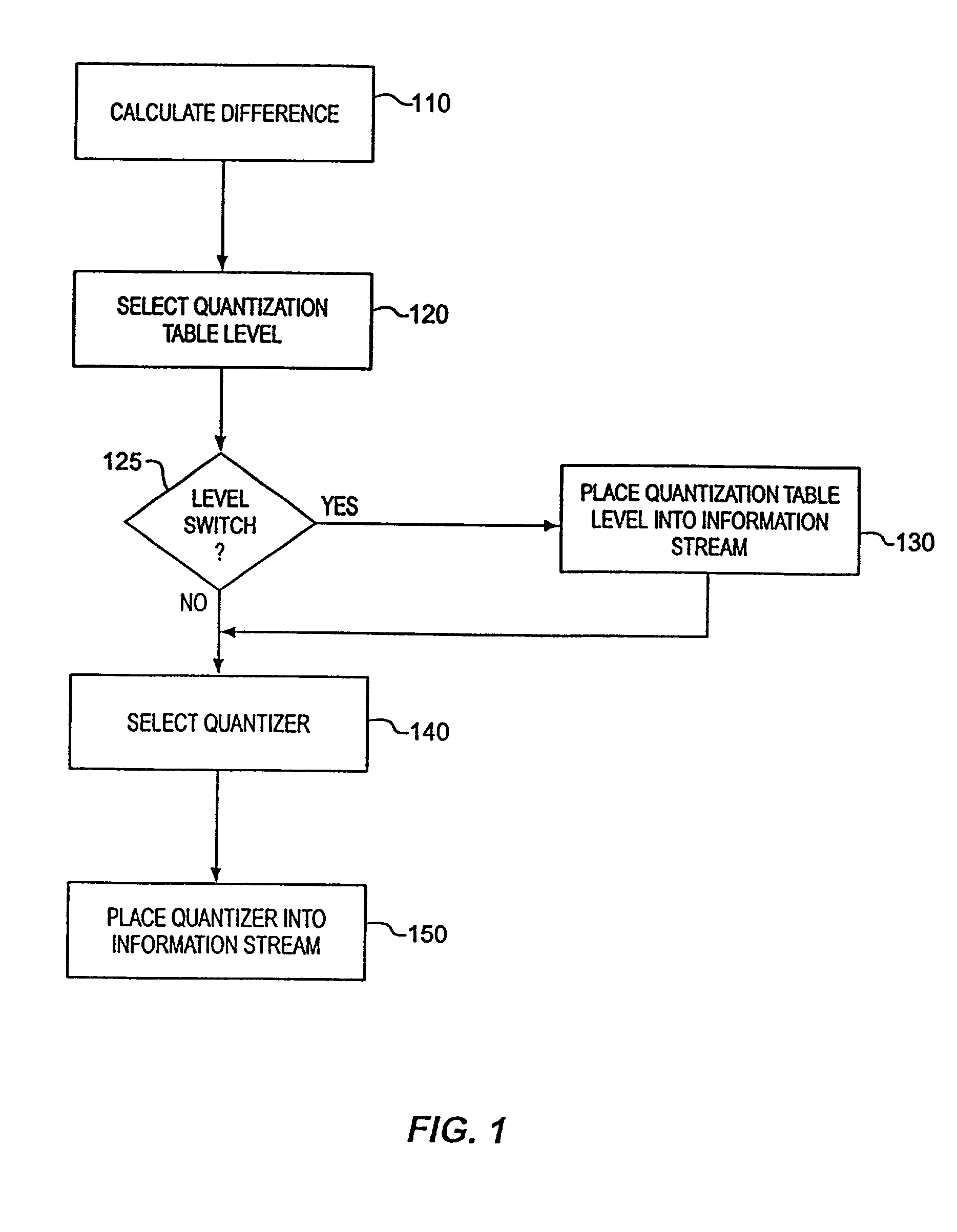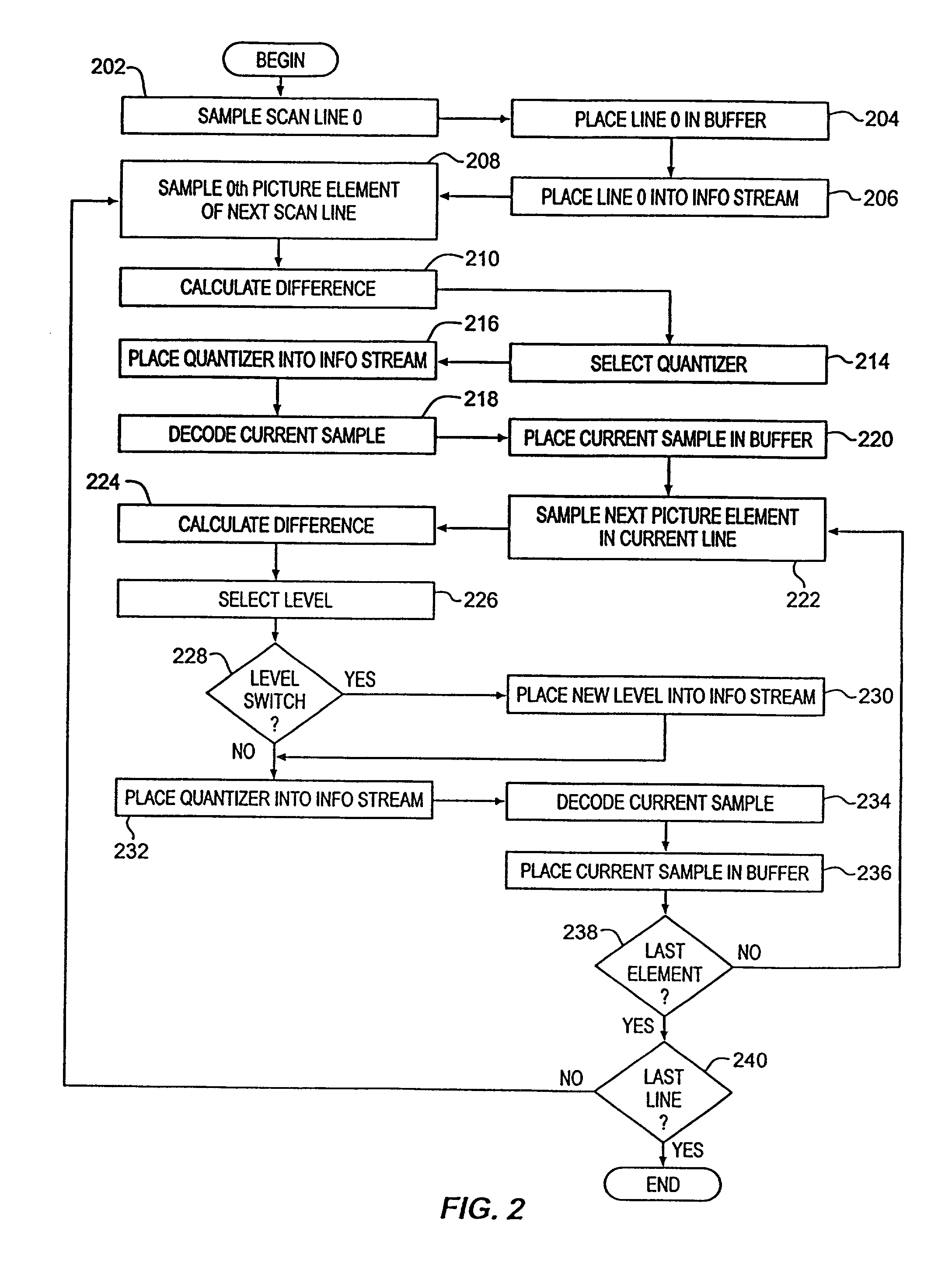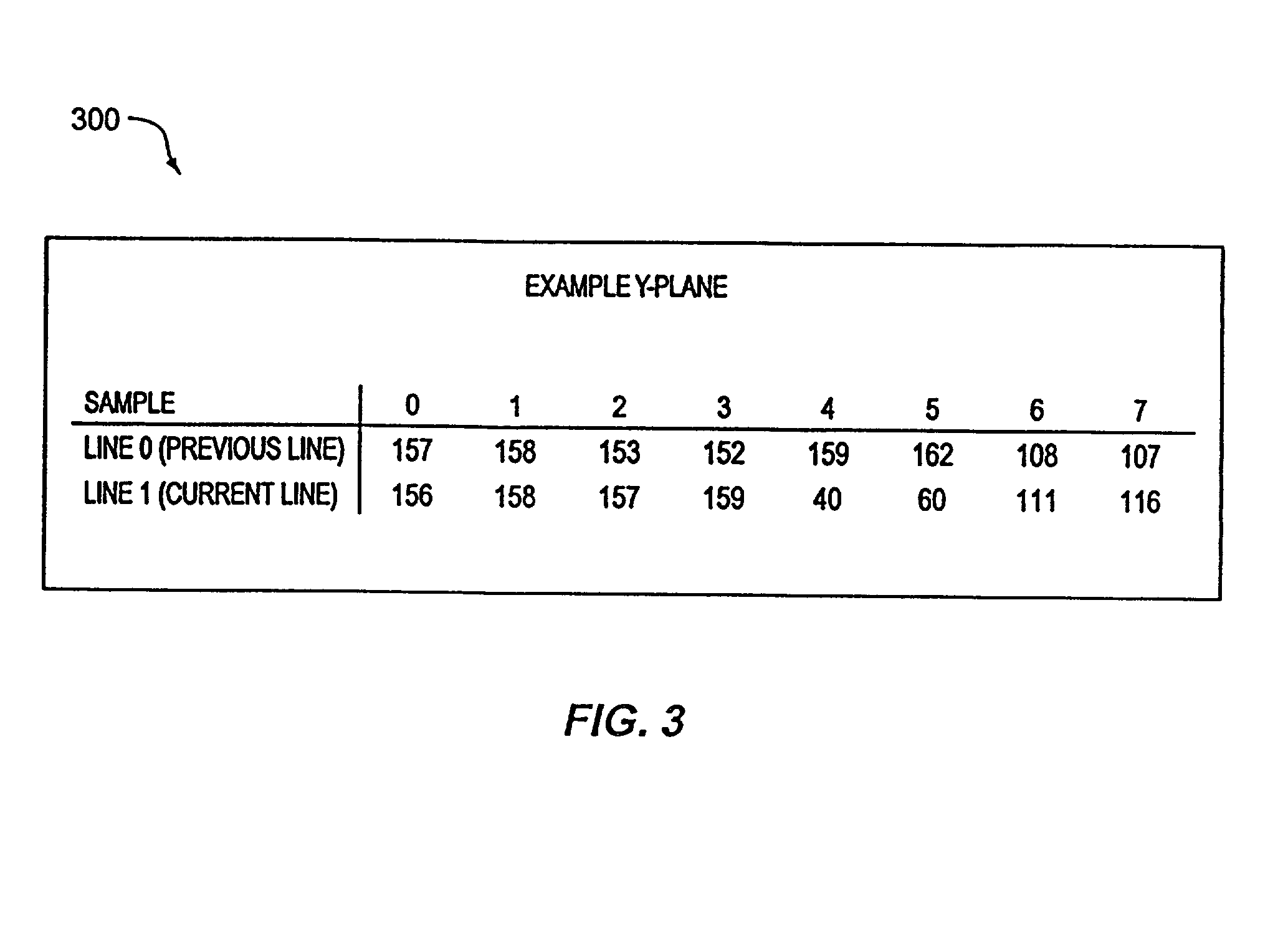Method and apparatus for near lossless digital image compression
a digital image and compression algorithm technology, applied in image data processing, instruments, computing, etc., can solve problems such as destruction of motion appearance, insufficient usb data rate to support a frame rate of 15 fps, and inconvenient interframe compression
- Summary
- Abstract
- Description
- Claims
- Application Information
AI Technical Summary
Problems solved by technology
Method used
Image
Examples
Embodiment Construction
[0028] For this embodiment, each picture element has a luminance intensity component (the Y component) and two color components (the C.sub.R and C.sub.B components). The totality of Y components for a given frame is referred to as the Y plane for that frame. Likewise, the totality of the C.sub.R and C.sub.B components for a given frame can be referred to as C.sub.R and C.sub.B planes, respectively. These luminance and color components conform to the International Telecommunications Union--Radio Sector (ITU-R) BT.601 standard. Other video color systems, such as RGB, may also be used with the invention.
[0029] FIG. 1 shows a flow chart of a method for encoding data representing a component of a picture element implemented in accordance with one embodiment of the invention. At step 110, a difference is calculated between a sample value for a picture element from a current scan line and a sample value for a picture element from a previous scan line.
[0030] Following step 110, a quantizati...
PUM
 Login to View More
Login to View More Abstract
Description
Claims
Application Information
 Login to View More
Login to View More - R&D
- Intellectual Property
- Life Sciences
- Materials
- Tech Scout
- Unparalleled Data Quality
- Higher Quality Content
- 60% Fewer Hallucinations
Browse by: Latest US Patents, China's latest patents, Technical Efficacy Thesaurus, Application Domain, Technology Topic, Popular Technical Reports.
© 2025 PatSnap. All rights reserved.Legal|Privacy policy|Modern Slavery Act Transparency Statement|Sitemap|About US| Contact US: help@patsnap.com



